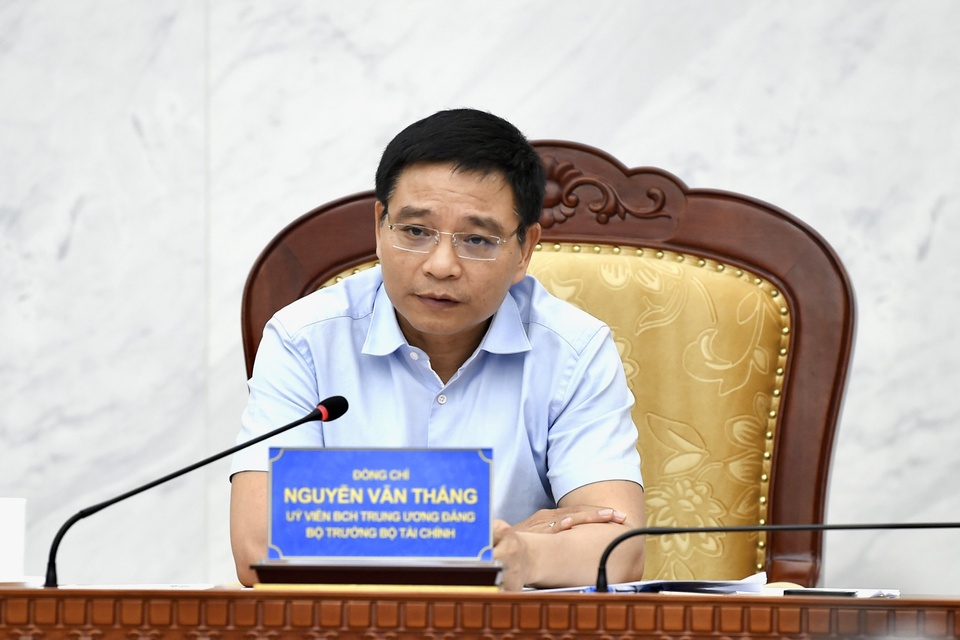Resolution 57 of the Politburo on national science, technology, innovation, and digital transformation development outlines specific mechanisms, including piloting new policies to boost growth in these sectors.
At a recent conference, Finance Minister Nguyen Van Thang stated that public-private partnerships (PPPs) are currently governed by the Law on Investment. However, these regulations are insufficient for effective implementation in science and technology due to a lack of flexibility, complex procedures, inadequate incentives, and low private investor confidence.
In response to Resolution 57, the government tasked the Ministry of Finance with drafting a decree to address these institutional bottlenecks, expand public-private cooperation, and effectively mobilize resources for these strategic sectors.
"The Ministry of Finance recognizes this as a crucial and urgent task to make science, technology, innovation, and digital transformation the central drivers of economic growth and sustainable development," the Minister said.
 |
Finance Minister Nguyen Van Thang at the conference. Photo: MOF |
Finance Minister Nguyen Van Thang at the conference. Photo: MOF
According to Pham Thi Hung, Deputy Director of the Public Procurement Department (Ministry of Finance), the draft decree proposes several innovative mechanisms.
The draft decree expands the definition of PPPs beyond the current Law on Investment, introduces additional collaboration models, offers enhanced incentives, and increases decentralization for greater flexibility. Investor selection will be broadened to include direct appointment, open bidding, competitive negotiation, and selection in special cases, including projects related to national defense and security.
The draft also addresses risk-sharing, a key factor in attracting private investment. For the first 3 years of operation, if investor revenue falls short of the approved financial plan, the state will compensate for 100% of the difference. If revenue drops below 50%, investors can terminate the contract and receive full reimbursement for their investment.
The decree streamlines procedures to suit science and technology projects. Approval authority, currently held by Ministers, heads of ministerial-level agencies, and provincial People's Committee Chairpersons under the Law on Management and Use of Public Assets, will be delegated to heads of public service units. State-owned enterprises can also participate in these partnerships.
Support mechanisms and incentives will also be enhanced. Under the current PPP law, the maximum state capital contribution is 70%. The new decree proposes increasing this and providing funding for science and technology development funds.
A major past obstacle has been the valuation of public assets. The decree allows heads of public service units to determine asset value and streamlines the project approval process, reducing the time from 30 days to 15 days, an 80% reduction.
If a suitable partner is already identified, direct negotiation is permitted, bypassing complex investor selection procedures.
Regarding state support, science and technology organizations, public service units, and state-owned enterprises will be exempt from the minimum 2% revenue contribution for strategic technology research and development or human resource training collaborations. Science and technology and innovation sectors will be fully exempt.
The draft decree outlines PPP models beyond the current law and the use of public assets, such as tripartite cooperation between the state, universities, and businesses. In this model, the state provides infrastructure, land, capital, intellectual property protection, specific policies, and strategic coordination. Science and technology organizations, educational institutions, and public service units conduct research, while businesses contribute knowledge, data, and human resources.
Another model is research and development cooperation between state agencies, science and technology organizations, public service units, state-owned enterprises, and private businesses. Input from Ho Chi Minh City suggests international organizations like the World Bank and the Asian Development Bank (ADB) could also invest in and fund these activities.
Another model is innovation partnerships for high-risk, long-term research and development programs with uncertain commercialization potential. This model suits emerging technologies with transformative potential for technology development and production.
Research sponsorship is another form of cooperation. The state and private sector can fund scientific and technological research, innovation ecosystems, startups, innovation centers with businesses, and shared research and development tools.
Funding sources include the state budget, science and technology funds, and research grants, encouraging contributions from organizations, individuals, and private businesses. International organizations like the World Bank and ADB can co-fund high-potential research and innovation projects.
The decree is expected to be issued in June and take effect on 1/7.
Phuong Dung












